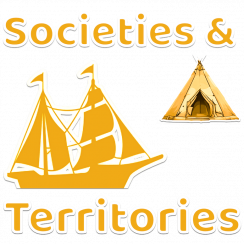In 1645, the three largest settlements in New France were Québec (later Québec City) (founded in 1608), Trois-Rivières (founded in 1634) and Ville-Marie (later Montréal) (founded in 1642). Although the territory of New France was quite large, the vast majority of the population was concentrated in these three cities, which were all located in the St. Lawrence Valley.
In Québec, the Catholic church was expanding, and streets were being made. Québec was becoming a small village. Trois-Rivières was still a very small trading post. Montréal had just been founded and was inhabited by only a few people, including missionaries who wanted to convert Indigenous people to the Catholic religion. Montréal’s first fort was just being built.
Trading posts
When picking a location to build a settlement in New France around 1645, it was important that the location was good for fur trading. Québec, Trois-Rivières and Montréal were all located in the St. Lawrence Lowlands, near waterways that made it easy to transport goods, like fur, to Europe. These locations were also near Indigenous people, which was helpful for fur trading. Finally, the climate and relief of the land in these areas made it fertile and good for farming.
From small village to big city
The settlements of Québec, Trois-Rivières and Montréal are still around today. What became of them? How have they changed?
Author: Alexandre Lanoix





